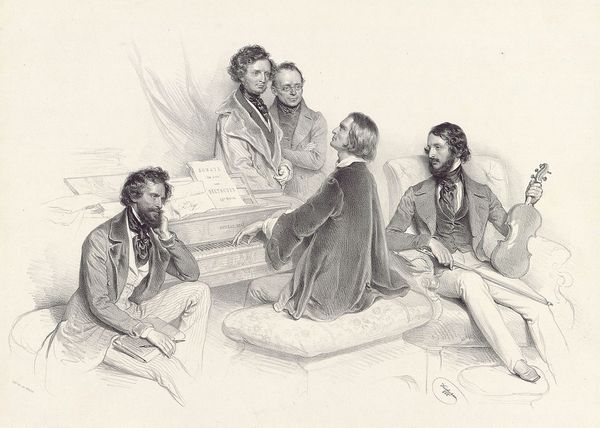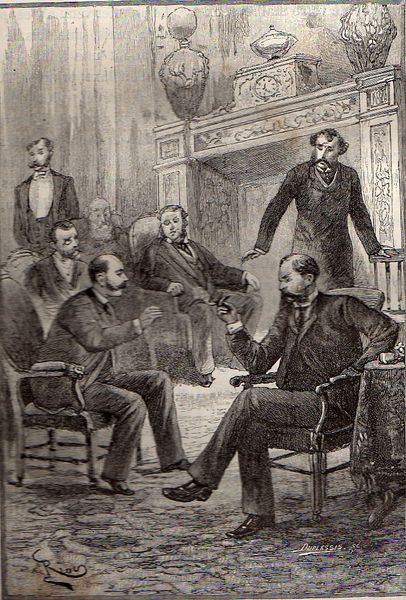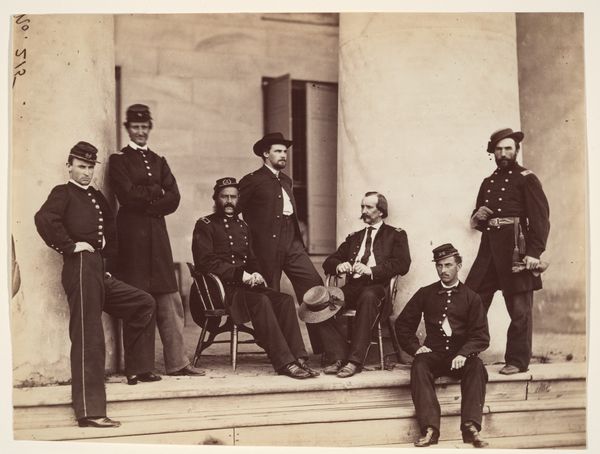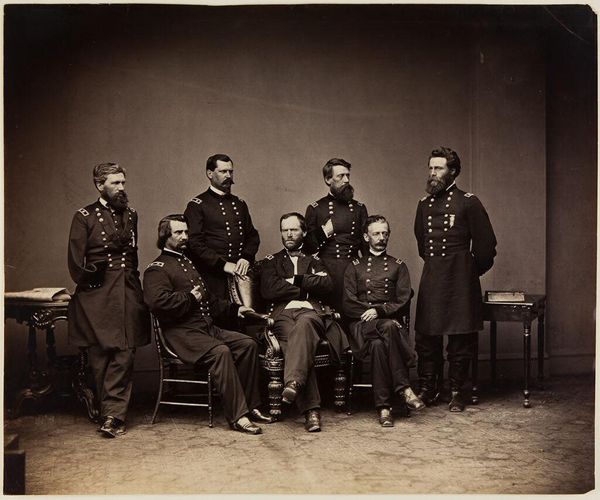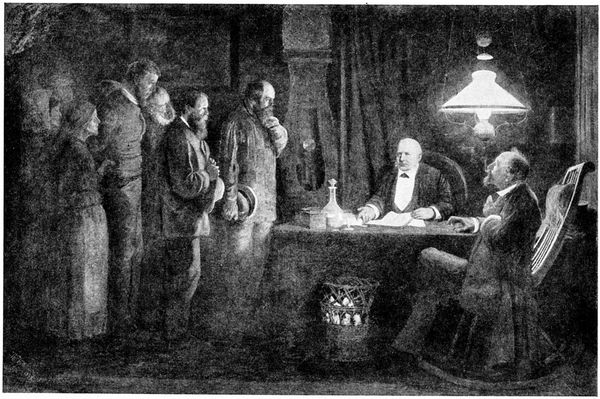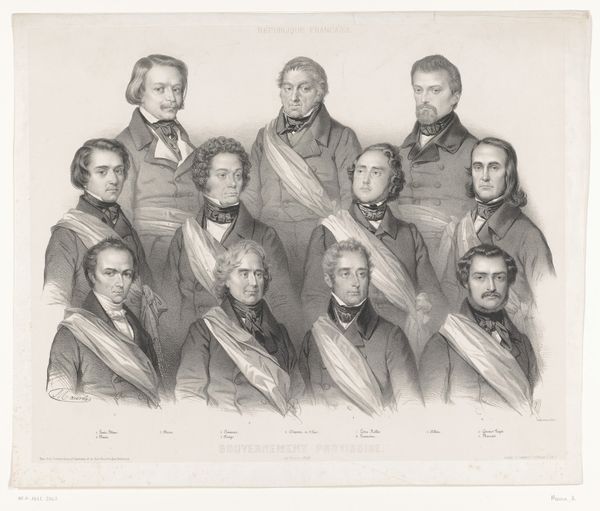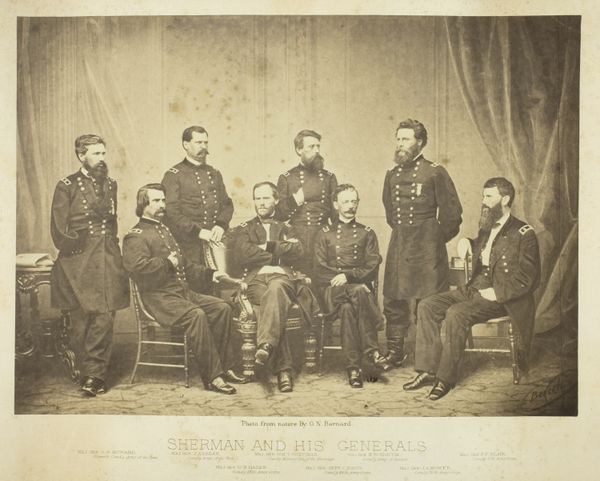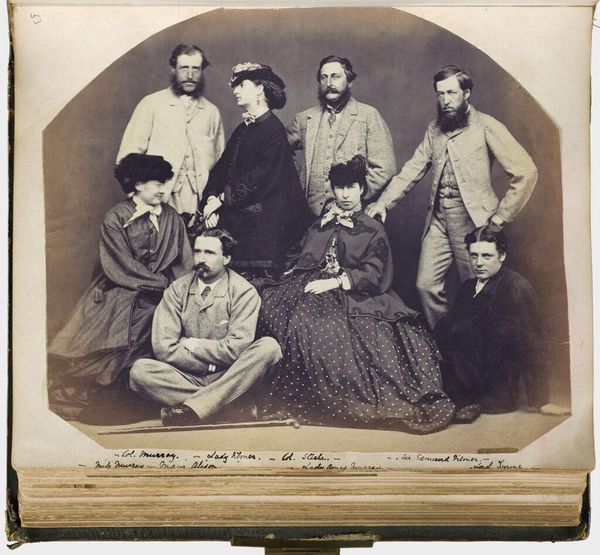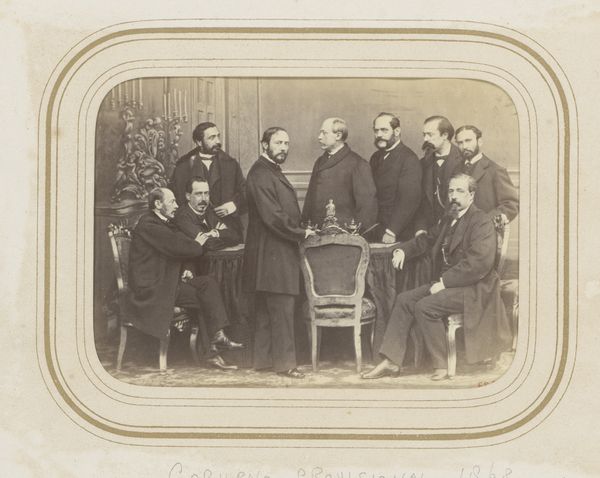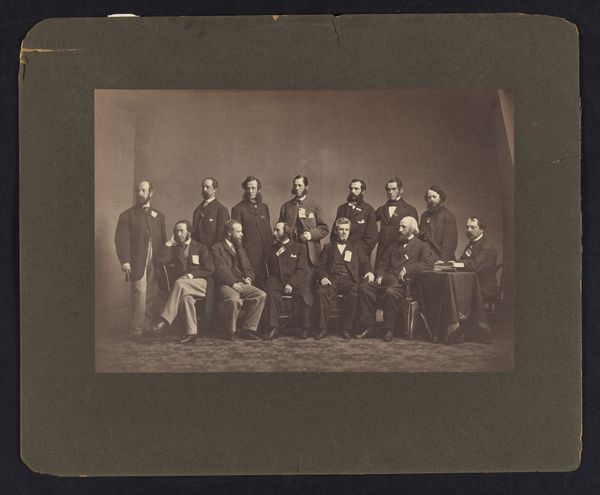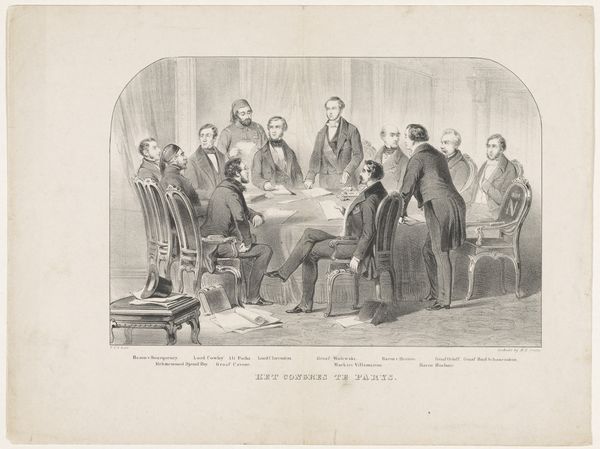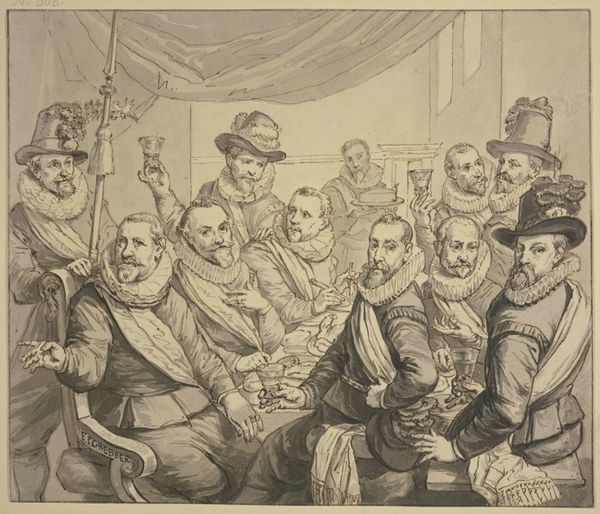
lithograph, print
#
portrait
#
portrait image
#
lithograph
# print
#
black and white format
#
group-portraits
#
romanticism
#
black and white
Copyright: Public domain
Curator: Here we have "Brothers Kleins," a lithograph created in 1849 by Josef Kriehuber. It’s an excellent example of group portraiture during the Romantic period. Editor: Wow, okay. My first thought? Someone told these dudes to “act natural” and they just… couldn't. There’s something very staged and stiff about their poses. The overall feeling is rather…intense. Curator: It’s fascinating to see how conventions dictated portraiture. Their poses communicate specific ideals about masculinity, family, and social standing during that era. Notice how their clothing and the deliberate composition convey wealth and power. The details such as high collars and the almost sculptural arrangements contribute to this statement. Editor: Absolutely. The one guy in the stripy pants clearly thought it was dress-down Friday! I am just distracted. There is also one sitting in a chair as if to declare, I am in charge. It looks more like an awkward family photo, rather than an intimate portrayal of kinship. The artist, Kriehuber, might have intentionally added to this slightly formal effect. It's almost satirical if it weren’t so beautifully rendered. Curator: Lithography allowed for a greater distribution of images, creating accessible portraiture that appealed to the rising middle class. Prints like this could celebrate individual success or propagate cultural memory and ideals about family ties and civic duty. Think about the original owner displaying this: how would this imagery enforce and remind of societal status? Editor: That's a great point about accessibility! Seeing these serious faces as commodities throws this artwork in a completely new light for me. It humanizes and dehumanizes them all at the same time. Curator: Right? And think about those now iconic beards! Beards are hardly neutral markers. Kriehuber had captured so much. I find that this kind of symbol-reading opens my mind up, even when viewing seemingly conservative black and white images from another historical context. Editor: For me, it's that tension between the artist's technical skill and the… slight absurdity of the scene that I keep coming back to. Like a perfectly played straight man in a comedy sketch. It's a powerful moment frozen in ink, forcing us to consider our own roles and how others see us.
Comments
No comments
Be the first to comment and join the conversation on the ultimate creative platform.
